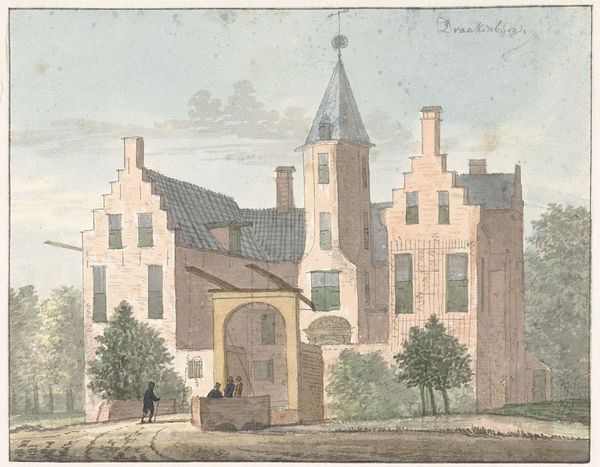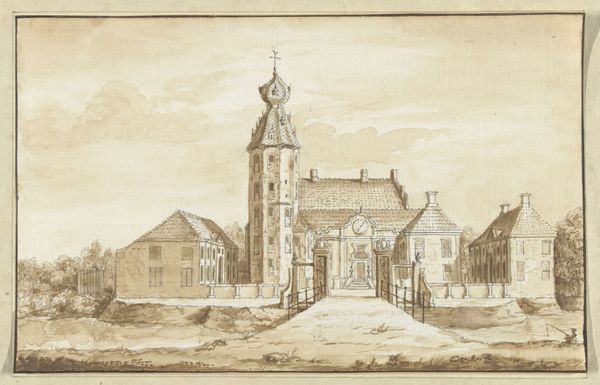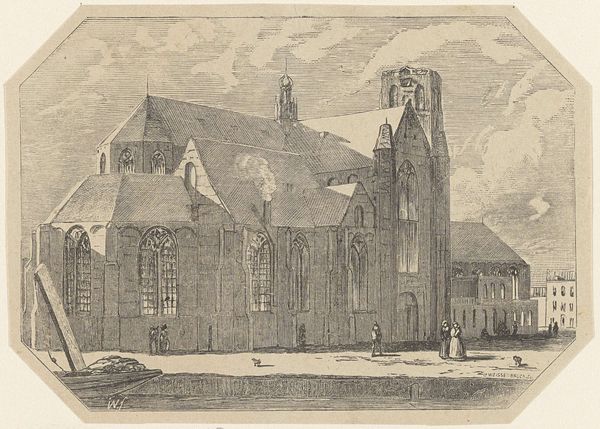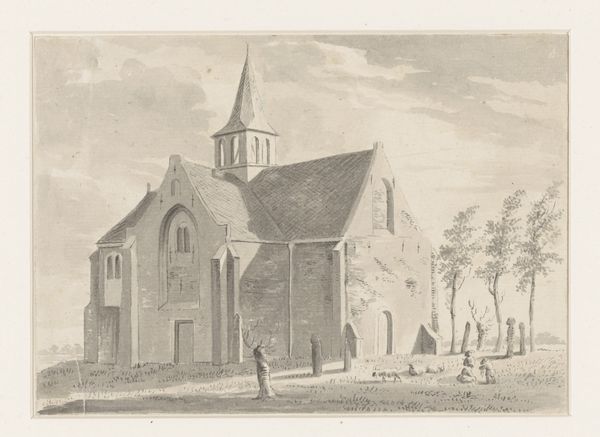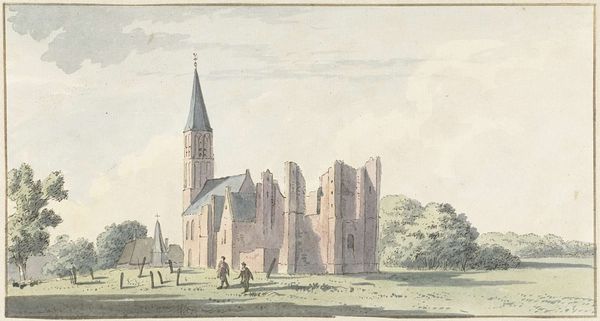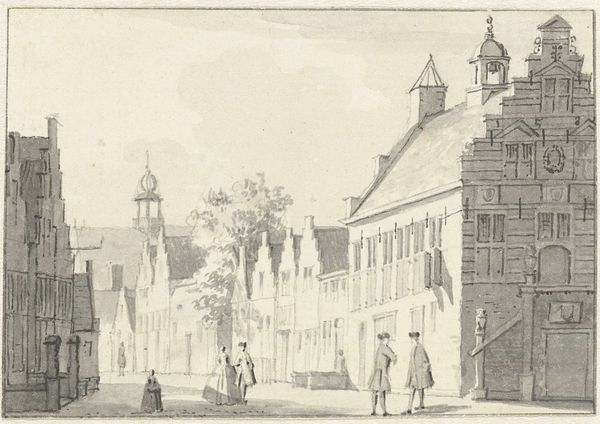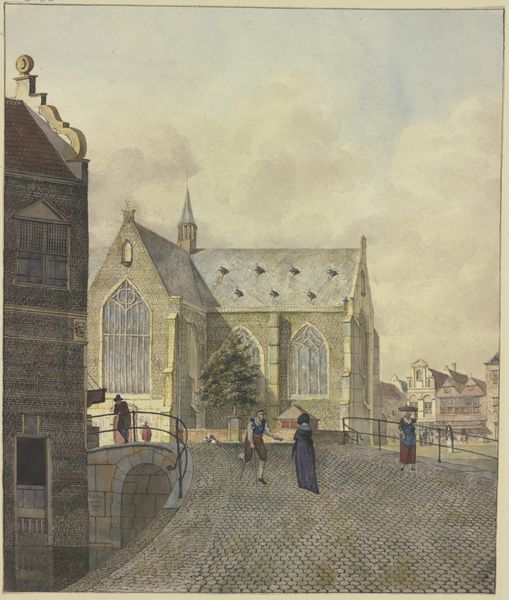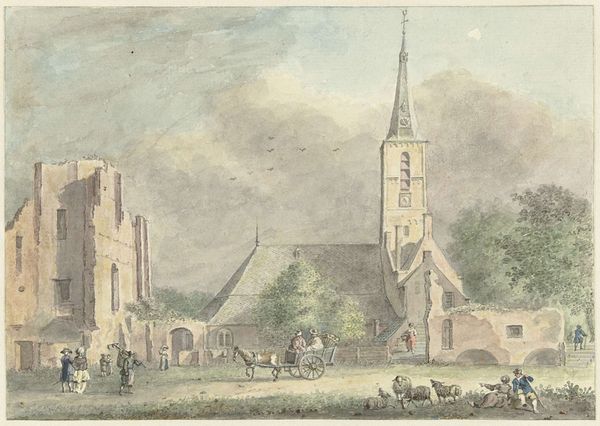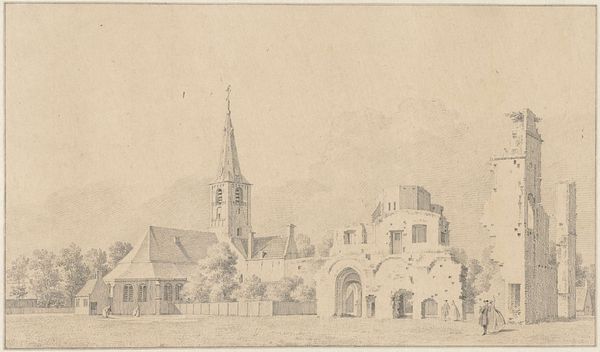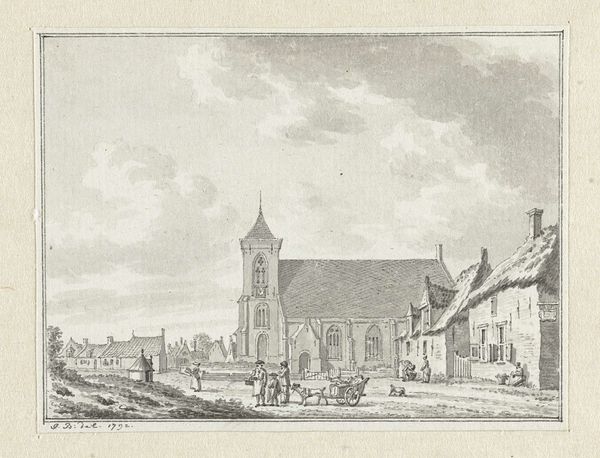
#
architectural sketch
#
amateur sketch
#
aged paper
#
quirky sketch
#
incomplete sketchy
#
architectural drawing
#
architecture drawing
#
quick sketch
#
watercolor
#
orthographic sketch
Dimensions: height 123 mm, width 187 mm
Copyright: Rijks Museum: Open Domain
Editor: This is Hendrik Tavenier's "Engelse kerk te Leiden," created in 1789. It's a watercolor sketch, and the aged paper gives it a fragile, almost ghostly quality. It feels incomplete. What do you see in this piece? Curator: I see a moment suspended between tradition and nascent change. The church, stoic in its architecture, stands as a symbol of established power, while the quick, almost frantic sketch lines hint at an underlying social restlessness. Editor: Social restlessness? How so? It seems like just a pretty, if slightly rough, picture of a church. Curator: Look closer. Tavenier, working on the cusp of revolution, presents the church not as a vibrant center, but as a shadow. The light barely touches it; the lines are hesitant, the composition slightly off-kilter. Consider who this church served. It was often the elite, those holding onto power while Enlightenment ideals were spreading. Doesn't that influence your understanding? Editor: I see what you mean. The figures in the foreground seem almost like an afterthought. Like the artist wasn’t interested in them at all. Curator: Precisely! These are the individuals who exist outside the power structure represented by the church, the individuals history often overlooks. Consider the artist’s positionality in relation to these figures; does their rendering suggest something about the relationship of social classes at the time? What do you make of it now? Editor: Now, seeing it that way, it feels less like a straightforward depiction and more like a… commentary. Thanks for showing me a new lens to use. Curator: It’s a vital lens. Art always speaks to its social context. Reflecting on that deepens our perception.
Comments
No comments
Be the first to comment and join the conversation on the ultimate creative platform.
